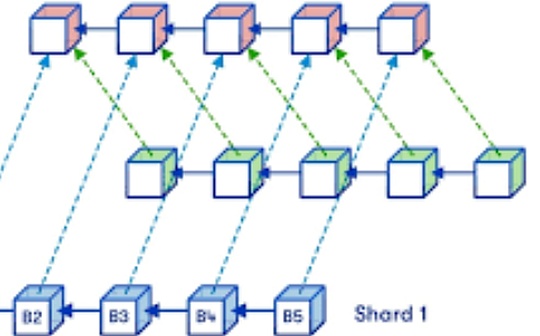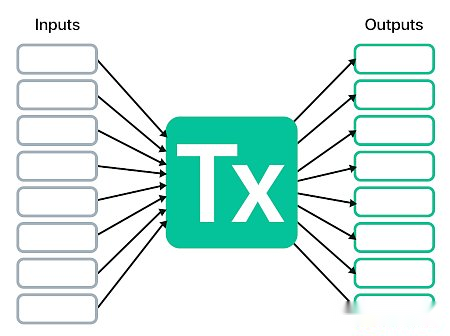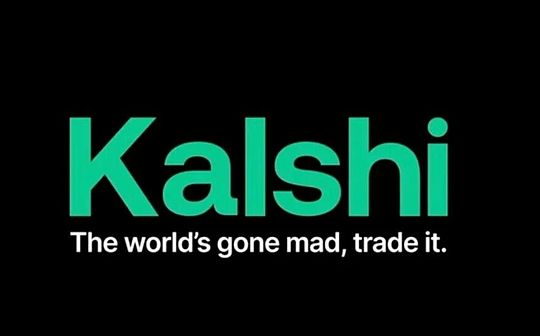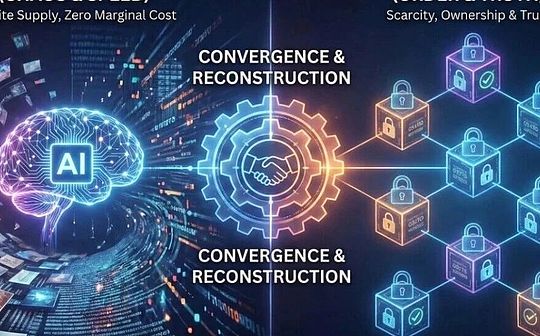
Author: Vitalik, founder of Ethereum; Translation: 0xjs@Bitchain Vision
Two and a half years ago, I pointed out in my article on “Ethereum End” that from a technical perspective, the different paths of future development of blockchain look very similar.In both cases, there are a large number of transactions on the chain and processing these transactions requires (i) a large amount of computation and (ii) a large amount of data bandwidth.A regular Ethereum node like the 2TB reth archive node that I used to write this article is not enough to directly verify such a huge amount of data and computation, even with great software engineering works and Verkle trees.
In both the “L1 sharding” and rollup-centered world, both ZK-SNARKs are used to verify the calculations and DAS (Data Availability Sampling) is used to verify the data availability.The DAS is the same in both cases.The ZK-SNARKs technology is the same in both cases.The difference is that one is smart contract code, and the other is an embedded feature of the protocol..From a technical point of view, Ethereum is actually sharding, and rollup is part of sharding.
 This begs a natural question: What is the difference between these two worlds?One answer is that the consequences of code errors are different: in the rollup world, tokens will be lost, while in the sharded chain world, consensus will be failed.But I expect the importance of errors to decrease as the protocol solidifies and form verification techniques improve.So, what are the long-term differences between these two visions?
This begs a natural question: What is the difference between these two worlds?One answer is that the consequences of code errors are different: in the rollup world, tokens will be lost, while in the sharded chain world, consensus will be failed.But I expect the importance of errors to decrease as the protocol solidifies and form verification techniques improve.So, what are the long-term differences between these two visions?
Diversity of execution environments
One idea we briefly tried on Ethereum in 2019 is the execution environment.Ethereum essentially has different “zones” that can have different account working rules (including completely different methods such as UTXO), how virtual machines work, and other features.This will enable some methods that are difficult to implement when Ethereum does all the work independently.
Ultimately, we gave up on some more ambitious plans and kept only the EVM.However, Ethereum’s L2 (including rollup, valdiums, and Plasmas) acts to some extent as an execution environment.Today, we usually focus on EVM equivalent L2, but this ignores the diversity of many alternatives:
-
Arbitrum Stylus, in addition to EVM, has also added a second virtual machine based on WASM.
-
Fuel, uses a Bitcoin-like (but more complete) UTXO architecture.
-
Aztec, introduced a new language and programming paradigm designed to be designed around ZK-SNARKs’ privacy-protected smart contracts.
 Fuel’s UTXO architecture
Fuel’s UTXO architecture
IWe can try to turn EVM into a super virtual machine covering all possible paradigms, but this will result in a far less effective implementation of each concept than making platforms like these focus on their respective fields.
Security Trade-offs: Size and Speed
Ethereum L1 provides very strong security.If some data is confirmed in a block on L1, this entire consensus (including social consensus in extreme cases) ensures that the data is not edited in a way that violates the response rules, and any execution triggered by the data will notRevoked, and data will remain accessible.To achieve these guarantees, Ethereum L1 is willing to accept high costs.At the time of writing, transaction fees are relatively low: Layer 2 networks cost less than one cent per transaction, and even the basic ETH transfer fee on L1 is less than $1.If technology advances fast enough that available block space growth can keep up with demand, these costs may remain low—but may not.And even if it’s $0.01 per transaction, it’s too high for many non-financial applications, such as social media or games.
butSocial media and gaming do not require the same security model for L1.It’s also acceptable if someone spends a million dollars to revoke a record of a game they lost, or make your tweet look like it was posted three days after the actual release.therefore,These applications should not pay for the same security costs.An L2-centric approach makes this possible by supporting various data availability methods from rollup to plasma to validiums.
 Different use cases, different L2 types
Different use cases, different L2 types
Another security trade-off occurs when passing assets from L2 to L2.It is expected that in 5-10 years all rollups will be ZK rollups, ultra-efficient proof systems such as Binius and Circle STARKs combined with a lookup and proof aggregation layer will enable L2 to provide the final state root at each slot.Currently, we have complex mixed optimism rollup and ZK rollup, various proof time windows.If we implement execution sharding in 2021, the security model that keeps sharding honest will be optimistic rollup, not ZK – so L1 will have to manage the system’s complex fraud proof logic and have assets transferred from sharding to shardingThe one-week waiting period for the film.But I think this issue is also temporary in the end.
The third and equally lasting dimension of security trade-offs is transaction speed.Ethereum generates a block every 12 seconds, and is unwilling to be faster because it will over-center the network.However, many L2s are exploring block time for hundreds of milliseconds.12 seconds is not too bad: On average, it takes about 6-7 seconds for a user to submit a transaction to be included in the block (not just 6 seconds, because it is possible that the next block will not include them).This is about the same time I had when I paid with a credit card.But many applications require higher speeds, and L2 provides that.
To provide higher speeds, L2 relies on a pre-confirmation mechanism: L2’s own validator digital signature promises to include transactions at a specific time, and they may be penalized if the transactions are not included.This is further summarized by a mechanism called StakeSure.
 L2 pre-confirmation
L2 pre-confirmation
We can try to do all of this on L1.L1 can be combined with a “fast pre-confirmation” and “slow final confirmation” systems.It can be combined with sharding at different security levels.However, this adds a lot of complexity to the protocol.In addition, all on L1 will have the risk of overloading consensus, because many methods of higher scale or faster throughput have higher centralization risks or require stronger forms of “governance”, if done on L1, the impact of these stronger requirements can affect other parts of the protocol.With L2 providing these tradeoffs, Ethereum can mostly avoid these risks.
Organizational and cultural advantages of L2
Imagine a country being divided into two halves, half becoming capitalism, and the other half becoming a highly government-led society (unlike this in reality, assuming that in this thought experiment it is not the result of any kind of traumatic warfare;But one day a boundary magically appeared, that’s all).In the capitalist section, restaurants are operated by a variety of decentralized ownership, chains and franchises.In the government-led part, they are all branches of the government, such as the police station.On the first day, there will be no big changes.People generally follow existing habits, and what works and what doesn’t work depends on technical reality, such as labor skills and infrastructure.A year later, you will expect to see big changes, as different incentive and control structures lead to big changes in behavior, affecting who comes, who stays, who leaves, what builds, what maintains, and what is abandoned.
Industrial organization theory covers many of these differences: it talks about not only the difference between an economy run by a government and a capitalist economy, but also between an economy dominated by large franchises and an economy run by an independent entrepreneur, for example, each supermarket is run by an independent entrepreneur.the difference.I think,The difference between an L1-centric ecosystem and an L2-centric ecosystem is similar..
 The architecture of “core personnel running everything” will have big problems
The architecture of “core personnel running everything” will have big problems
The key benefits of Ethereum as a Layer 2 network-centered ecosystem can be expressed as follows:
Ethereum is an L2-centric ecosystem where you can freely and independently build a sub-ecosystem that belongs to you, with your unique features and is part of the larger Ethereum..
If you are just building an Ethereum client, you are part of a larger Ethereum, and although you have some room for creativity, it is much less than L2.If you are building a completely independent chain, you have the greatest space for creativity, but you lose the benefits of sharing security and sharing network effects.L2 forms a happy middle ground.
L2 creates not only a technology opportunity to experiment with new execution environments and security tradeoffs to achieve scale, flexibility and speed: They also create incentives for developers to build and maintain it, and for the community to form and support it around it.
The truth is that each L2 is isolated, which means deploying a new method is permissionless: there is no need to convince all core developers that your new method is “safe” to the rest of the chain.If your L2 fails, it is your responsibility.Anyone can devote themselves to completely strange ideas (such as Intmax’s approach to Plasma) that can continue to build and eventually deploy even if they are completely ignored by Ethereum core developers.L1 features and precompilation are not the case, and even in Ethereum, the decisions of success and failure of L1 development tend to depend on more political factors than we would like to.Whatever it can be constructed in theory, the different incentives created by L1-centric ecosystems and L2-centric ecosystems will ultimately greatly affect what is actually constructed, its quality and order.
Challenges for Ethereum’s L2-centric ecosystem
 Layer 1 + 2 architecture will also have problems
Layer 1 + 2 architecture will also have problems
ThisA key challenge facing an L2-centric approach is coordination, while the L1-centric ecosystem has little to face.In other words, although Ethereum branching goes out, the challenge is to keep it still feels like “Ethereum” and have a network effect as Ethereum rather than N independent chains.Today’s situation is not ideal in many ways:
-
Moving tokens from one L2 to another usually requires a centralized bridge platform, very complicated for ordinary users.If you have tokens on Optimism, you can’t just paste someone else’s Arbitrum address into your wallet and send the funds.
-
Cross-chain smart contract wallet is not supported well——Whether it is a personal smart contract wallet or an organizational wallet (including DAO).If you change your key on one L2, you also need to change your key on every other L2.
-
Decentralized verification infrastructure often lacks.Ethereum is finally starting to have excellent light clients like Helios.However, if the activities all happen on L2 that requires the RPC to be concentrated by themselves, it doesn’t make sense.In principle, once you have the Ethereum header chain, it is not difficult to make a light client for L2; in fact, there are too few people who emphasize it.
There are efforts to improve all three aspects.For cross-chain token exchange, the ERC-7683 standard is an emerging option, unlike the existing “centralized bridge”, which does not have any fixed central operators, tokens or governance.For cross-chain accounts, most wallets adopt the method to update keys using cross-chain replayable messages to update keys in the short term, and use key storage rollups in the long term.L2 light clients begin to appear, such as Beerus for Starknet.Furthermore, with next-generation wallets, the latest improvements to the user experience have solved many more basic issues, such as eliminating the need for users to manually switch to the correct network to access the dapp.

Rabby presents a comprehensive view of asset balances across multiple chains.In the dark age not long ago, wallets haven’t done that yet!
But it needs to be recognized that L2-centric ecosystems do go back to the current to some extent when they are coordinated.A single L2 does not have natural economic incentives to build coordinated infrastructure: Small ones don’t, because they will only see the small share of their contribution benefits, and neither the big ones do, because they will benefit more from strengthening their own local network effects.If each L2 optimizes its individual parts individually, no one considers how each part adapts to a larger whole, we get the urbanization dystopia shown in the pictures in the previous paragraphs.
I don’t claim there is a magical perfect solution to this problem.The best advice I can say is that the ecosystem needs to be more fully aware that cross-L2 infrastructure is an Ethereum infrastructure that should be valued and funded like L1 clients, development tools and programming languages.We have Protocol Guild; maybe we also need the Infrastructure Guild.
in conclusion
“L2” and “sharding” are often described as two opposite blockchain scaling strategies.But when you look at the underlying technology, it is confusing: the actual underlying expansion method is exactly the same.You have some sort of data sharding.You have fraud proofers or ZK-SNARKs proofers.You have a solution for cross {rollup, shard} communication.The main difference is: Who is responsible for building and updating these parts, and how much autonomy do they have?
From a technical perspective, an L2-centric ecosystem is sharding, and one can create its own sharding according to its own rules.This sharding is powerful and can stimulate creativity and independent innovation.But it also faces key challenges, especially in coordination.In order for an L2-centric ecosystem like Ethereum to succeed, it needs to understand these challenges and face them directly to get as much of the benefits of the L1-centric ecosystem as possible and to be as close as possible to having bothGood condition.






